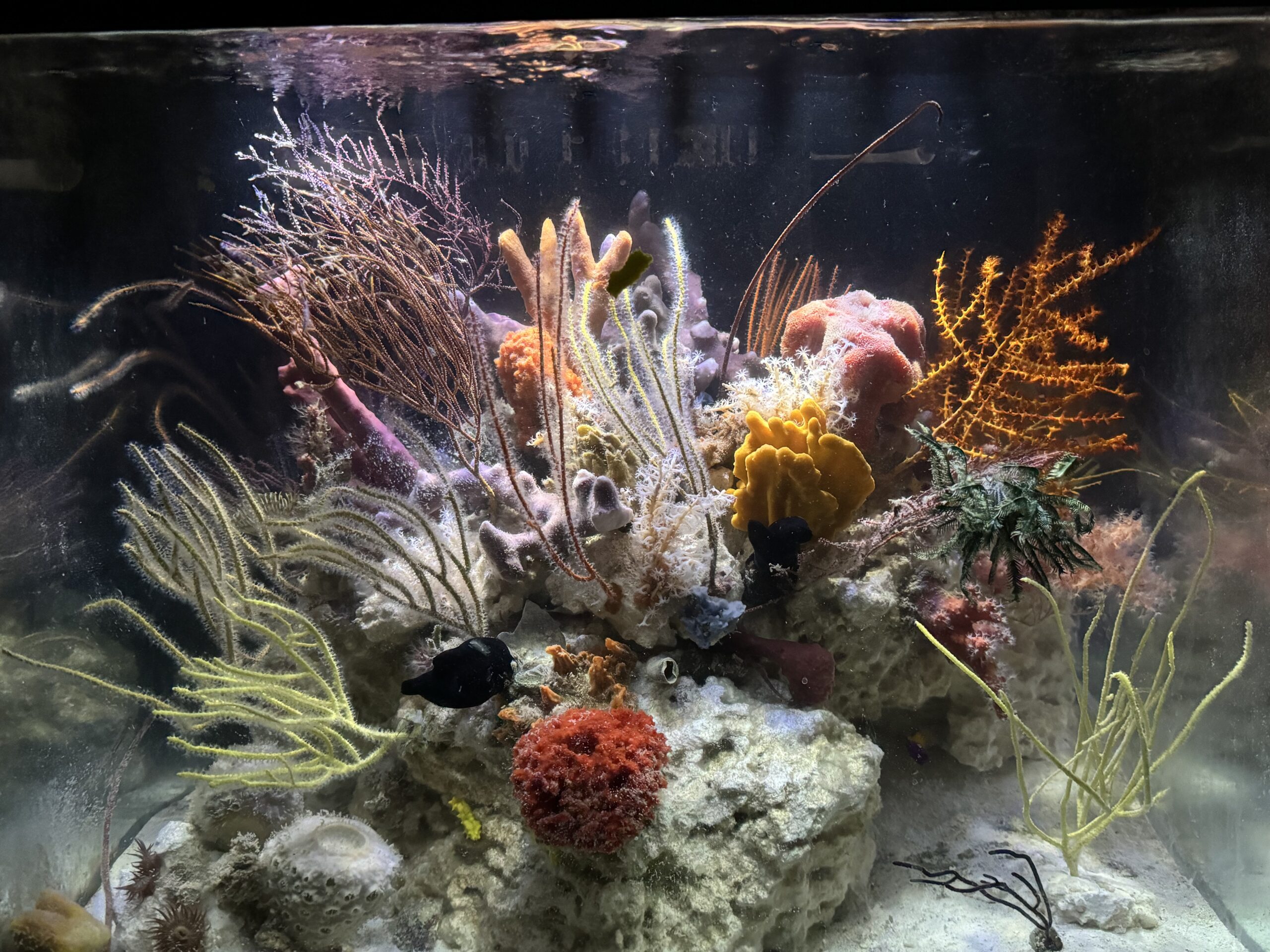Deepwater organisms have always had a special place in my heart. In this article, we are going to explore my “Deepwater Reef”. First things first, what is generally considered to be “deepwater”? Many people have their opinions on this, but I consider anything collected or observed below eighty feet to be deepwater. However, some people may use the term “deepwater” with certain families of corals that don’t actually come from waters of much depth. For example, most “deepwater” acros don’t generally come from much more than thirty feet of water, excluding a few species that reside down much deeper.

With all that said, most organisms in this specific tank are collected from about a hundred to two hundred feet plus in-depth, depending on the species. My goal with this tank is to feature some of the odd or unique corals, fish, and invertebrates that don’t get the appreciation they deserve. This tank is about forty gallons and has a standard five-gallon tank as its sump. When I first saw this setup at a local collector’s house, I couldn’t resist the idea that it would make quite a good smaller-sized NPS system.
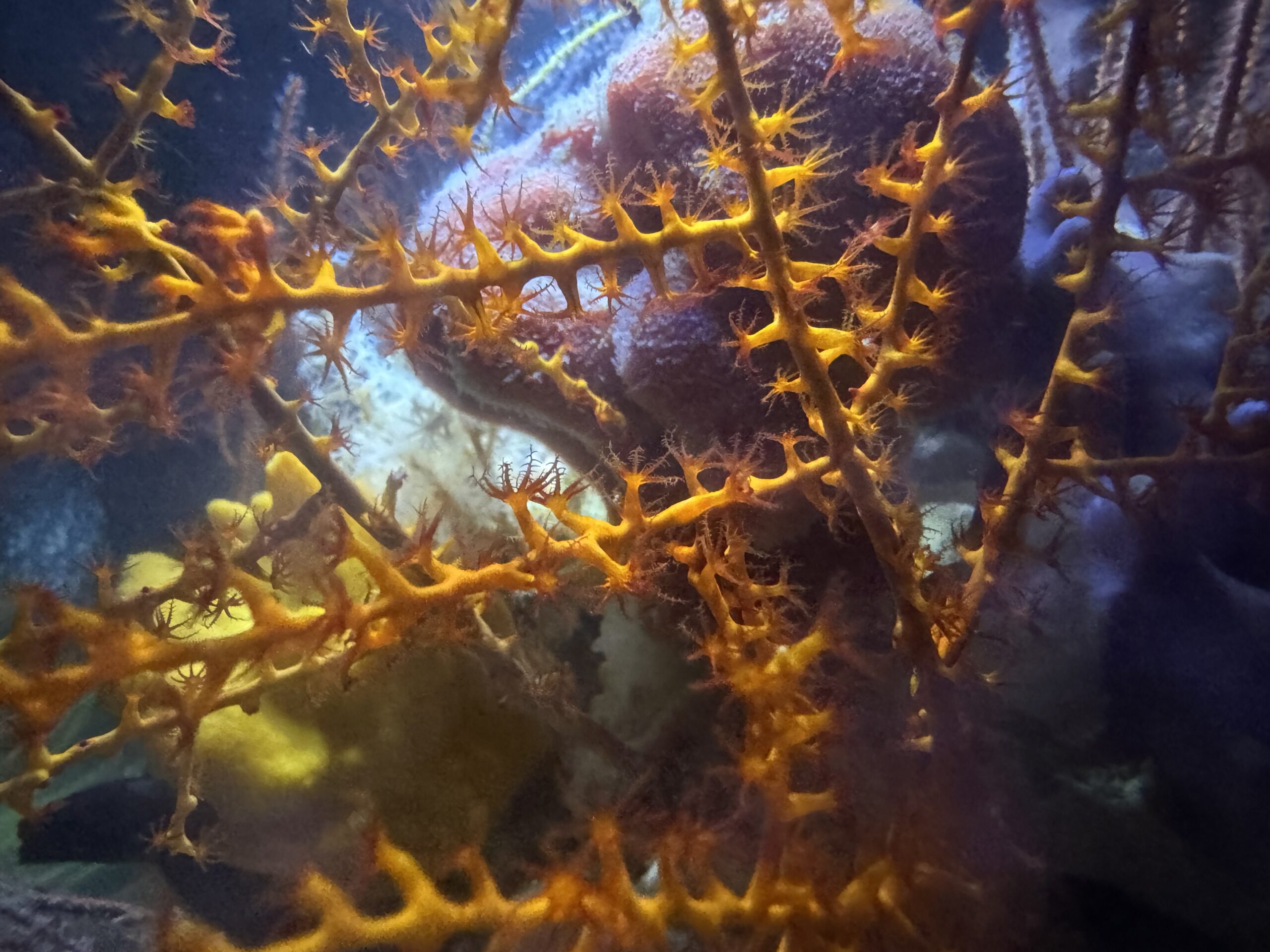
Generally speaking, fish and corals are my hobbies, but I must give credit where credit is due and give a shoutout to my wife, Elizabeth, who actually scaped this tank herself! I may be partial, but it turned out amazing! Somehow, in her creative mind, she managed to create many caves and ledges for fish and invertebrates to hide in as well as a good amount of surface area to place many corals, sponges, and other sessile invertebrates.
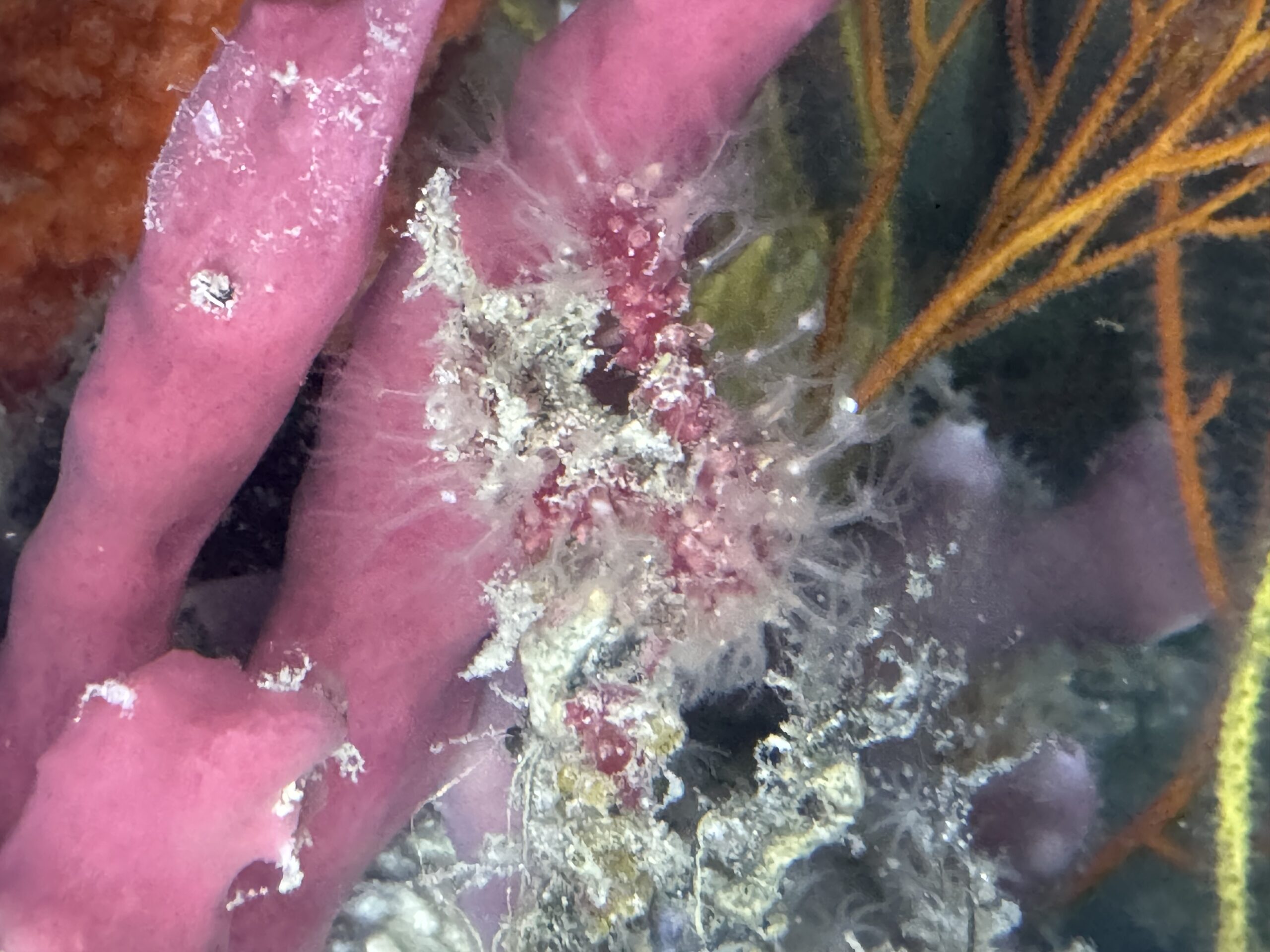
In my previous NPS reef tank, my approach mostly consisted of putting any and every NPS organism and coral I could get my hands on into a tank and creating a beautiful reef system. That approach worked, and I enjoyed it. However, this time, I decided to go with a different approach than my previous NPS reef tank and wanted to aim to make it a Caribbean-dominant NPS reef. For the most part, I stayed true to this approach; however, there are a few organisms that I always enjoy keeping that I couldn’t resist that come from the Indo-Pacific. These include a sea apple, a chili coral, a Paraminabea rubesea, and a multitude of tiny yellow sea cucumbers, Colochirus robustus. Other than those organisms, everything else has been hand-collected throughout the West Atlantic Ocean near Florida or the Caribbean.

Stocking this tank has been tricky as sourcing organisms from Caribbean waters itself can be challenging, and sourcing deepwater organisms is even more challenging. Other than a couple of Leptogorgia gorgonians and a few local sponges that I have personally collected, everything else has come from depths of a hundred feet plus. This makes collecting these specimens quite difficult and even dangerous as currents, visibility, and decompression sickness are huge factors that play a considerable role in the price most of these organisms are listed for. Thankfully, I am blessed to know a few local sources that are willing to go to the extreme to collect these organisms for the aquarium trade.
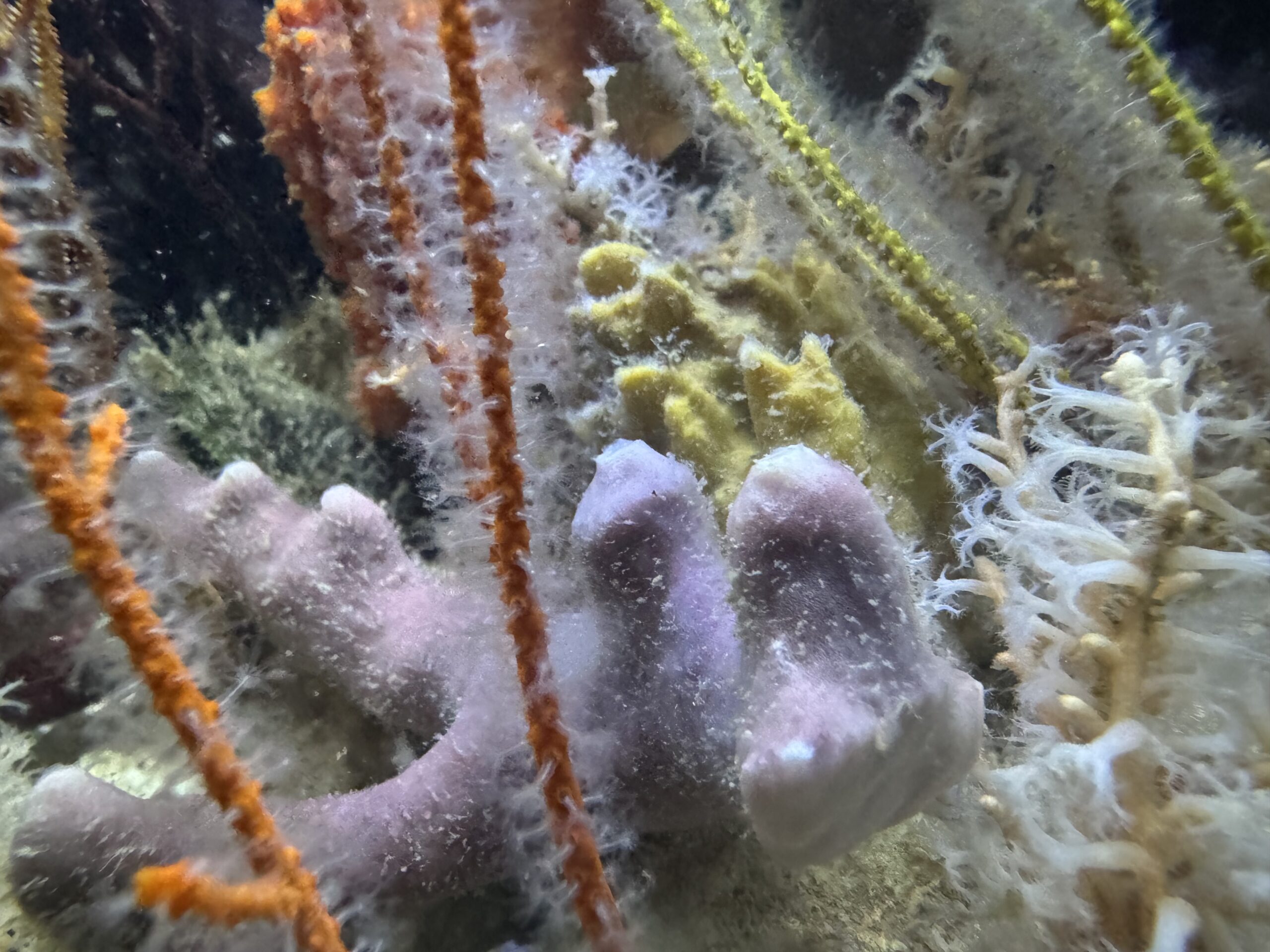
If you have read this far, maybe you are wondering what am I actually keeping in this system. Let me break it down. The first two organisms added to this specific tank were my prized Paraminabea colony and a chili coral. The next few specimens were gorgonians of the genus Leptogorgia that I personally collected for this system to add a splash of color. These happen to be a very hardy NPS gorgonian that I would recommend for any NPS tank. I also have three specimens of Swiftia exserta that reside in this reef alongside a Red Sea Whip, Ellisella schmitti, and two Red Sea fans that I am still trying to identify as of right now.
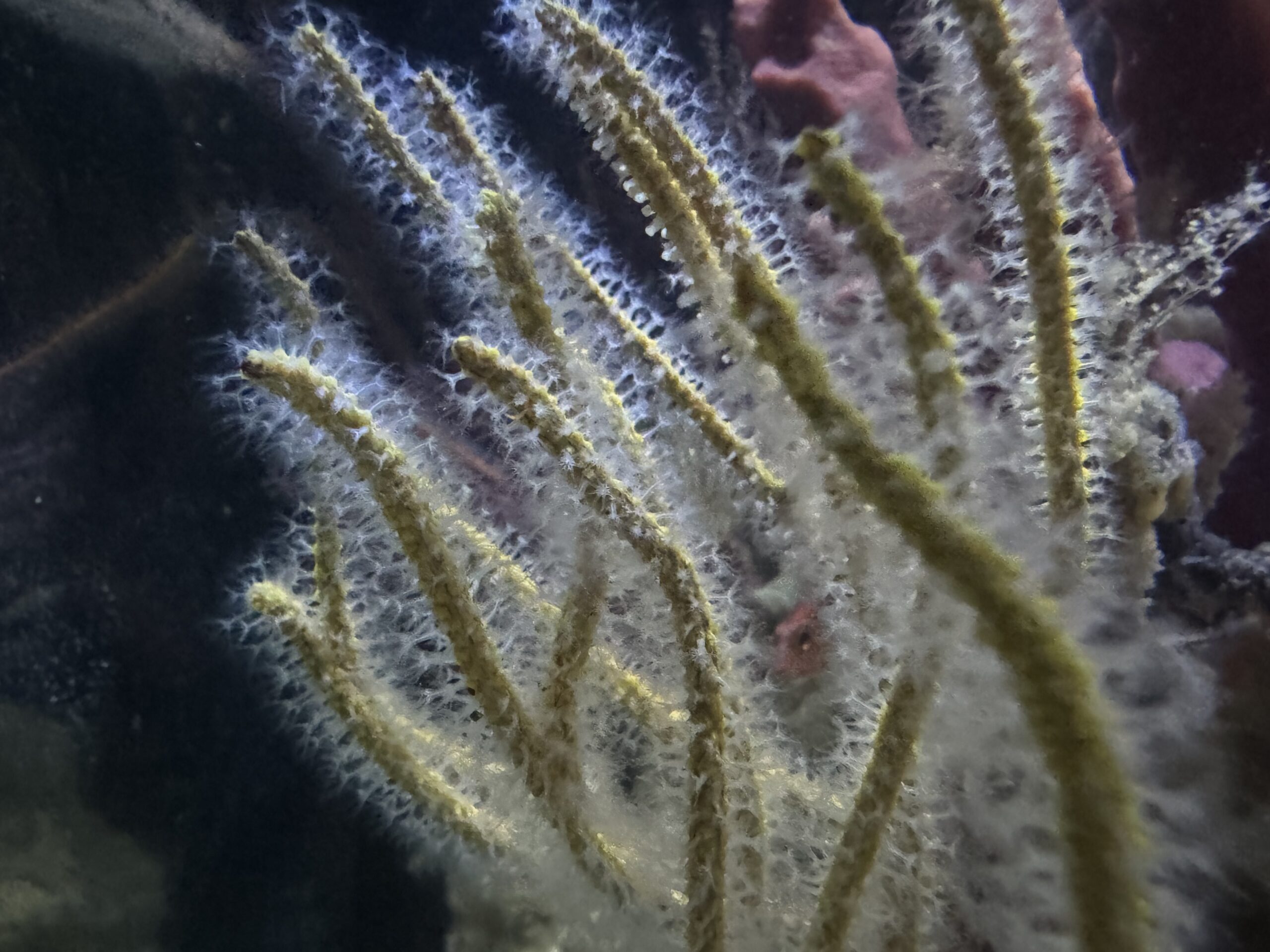
After most of these gorgonians were placed, I decided it was time to start filling in the gaps between the gorgs with sponges of many species and a couple of encrusting octocorals, including some Red Telesto, Sterotelesto coralina, and some Snowflake Coral Carijoa riisei. Both of these species of encrusting octocoral are rather hardy and fast-growing. As another filler, I used many colonial tunicates and sea squirts, including some Phallusia nigra. I also have a couple of tube anemones and a couple of red cherry anemones that I collected.
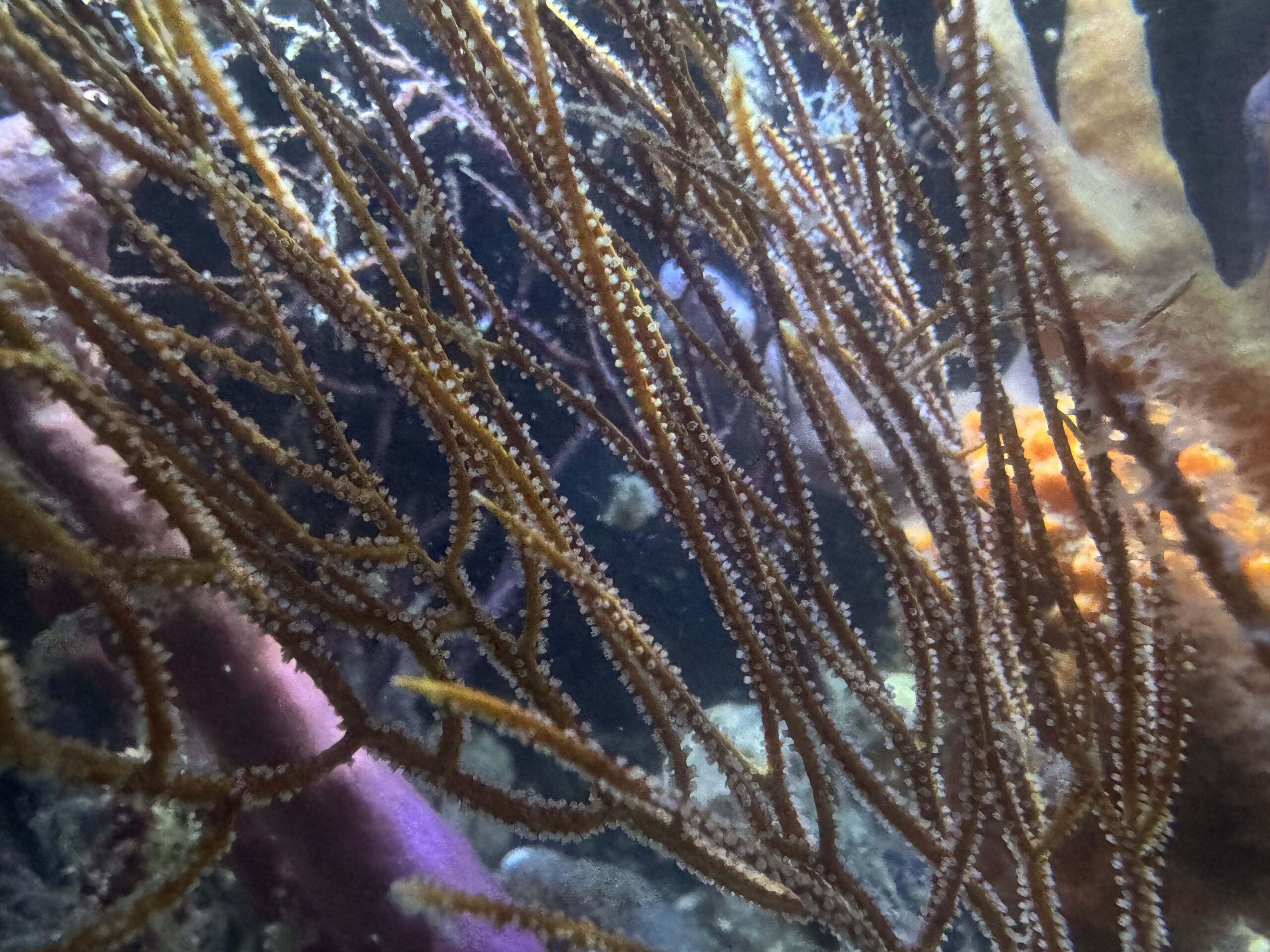
When I started adding fish, the first fish I added was a simple flame cardinalfish that I collected off of Florida’s Atlantic coast. The next two fish I had added were a pair of Orange Back basses, Serranus annularis. The only other fish in there as of right now is a Floridian Poey’s Butterflyfish, Prognathodes aculeatus. I plan to add a few other fish residents in time, but I am being very picky as I want something rare and unique that fits my tank approach as well.
Many of you may be wondering what it takes to keep an aquarium like this going. Honestly, it can be quite time-consuming. From my experience with my previous NPS tank, I knew I needed to do things a bit differently. I decided to basically go with no filtration whatsoever, meaning no filter socks, no skimmer, and no UV sterilizer. You may wonder, what was he thinking. Well, I wanted to make sure the foods I am feeding the tank stay suspended as long as possible to enable me to feed the most polyps possible. My goal without the filter sock is to have the food particles constantly circulating through the system without being removed unless they are eaten.
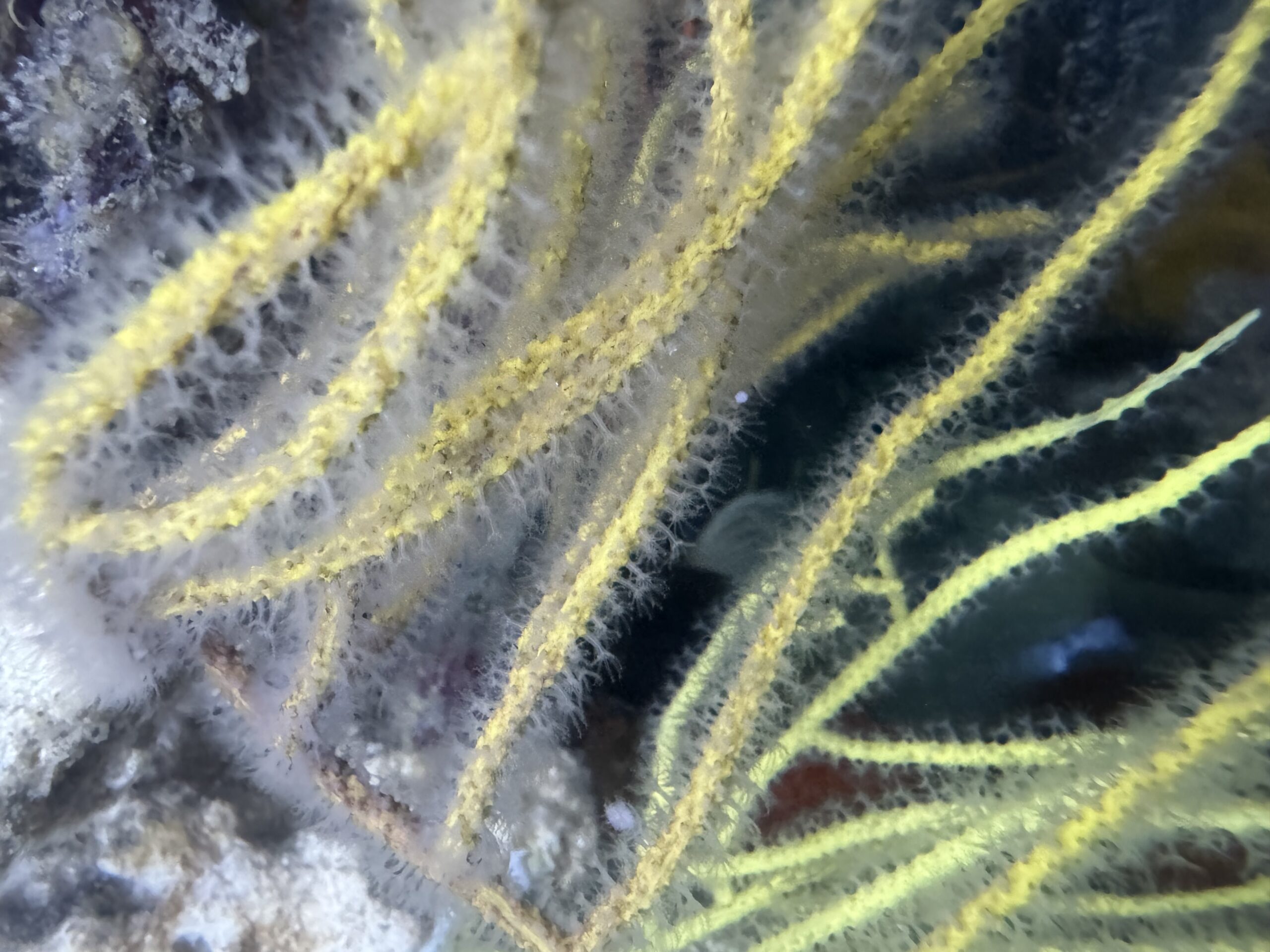
Furthermore, I decided not to use a UV-Sterilizer because I believe that many bacteria play a vital role in the coral’s health and longevity. I also decided not to use a skimmer because I think that they could potentially be removing some beneficial nutrients that the corals and sponges absorb. Having said that, YES, this definitely creates more work for me. I am currently doing weekly water changes of about twenty gallons of water for this tank, and the water I am using is actually straight from one of my favorite collecting spots in the Gulf of Mexico. This being said this type of water change can come with its own set of risks because it is straight from the ocean.
However, having weighed the pros and cons, I personally think this gives the sponges, specifically, the best chance at long-term success in the home aquarium. Many sponges in this tank originate from that specific area so I definitely believe that this has benefited the sponges greatly as I have noticed significant growth on all of the sponges as well as no signs of dying off whatsoever. I also feed this reef very heavily with just about every Reef Nutrition product available. The corals themselves seem very healthy and happy compared to my previous NPS tank, which is a huge confidence gain for me.
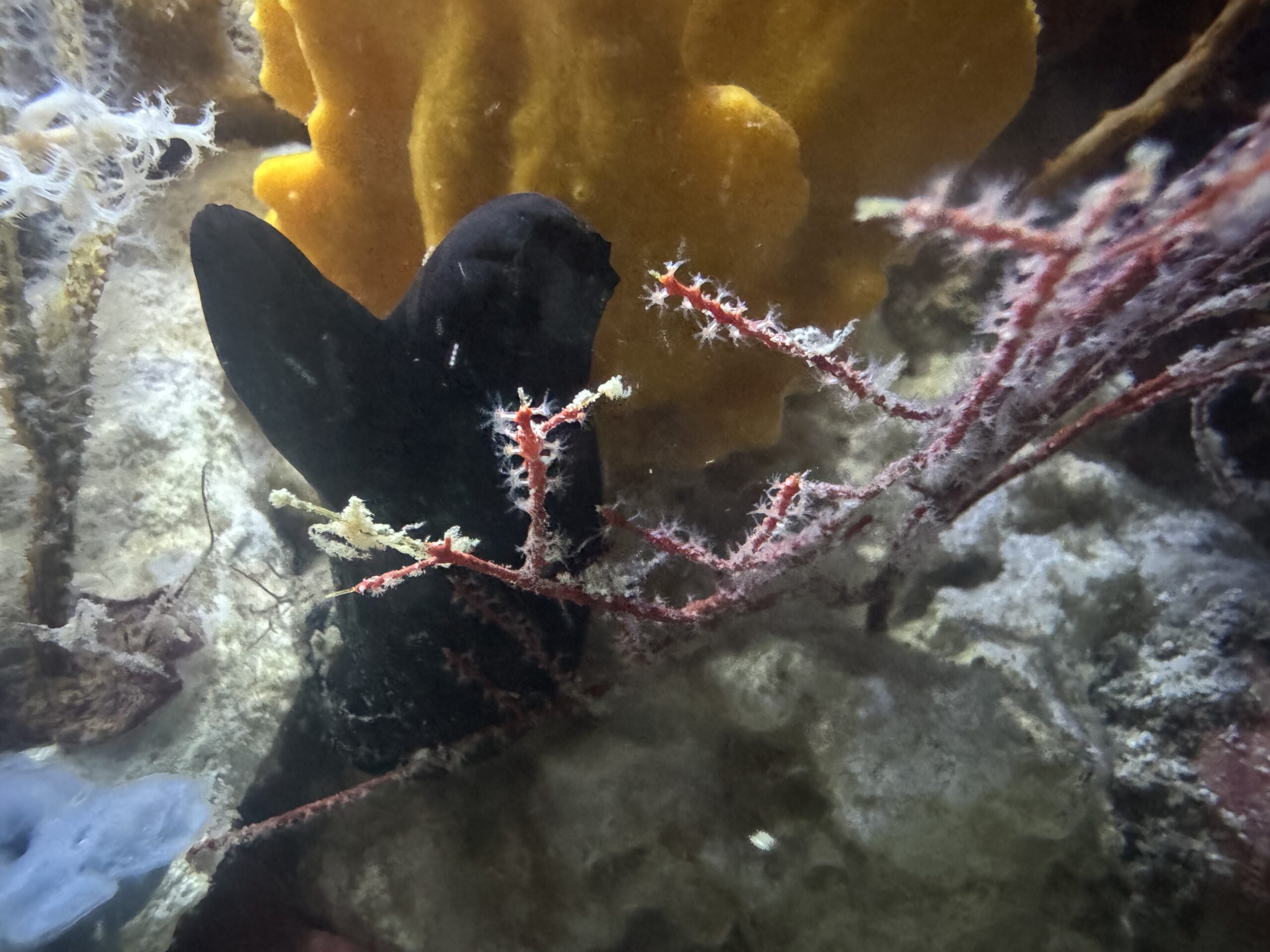
As for lighting, I have a rather dim LED strip that lights the tank for about six hours a day; it is not otherwise on unless I am photographing the tank. Using this method, I have not yet lost a single coral, sponge, or any sessile invertebrates as of now. This tank still has a long way to go before I will consider it to be a full success. Only time will tell for sure if my method on this specific NPS tank will work. Stay tuned for more information and updates, and, as always, if you have any questions, feel free to reach out and check out some of my other articles on Reef Builders!


